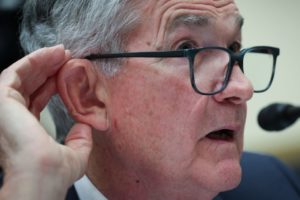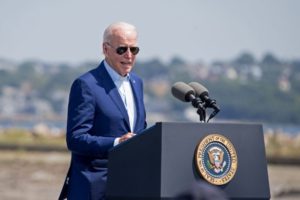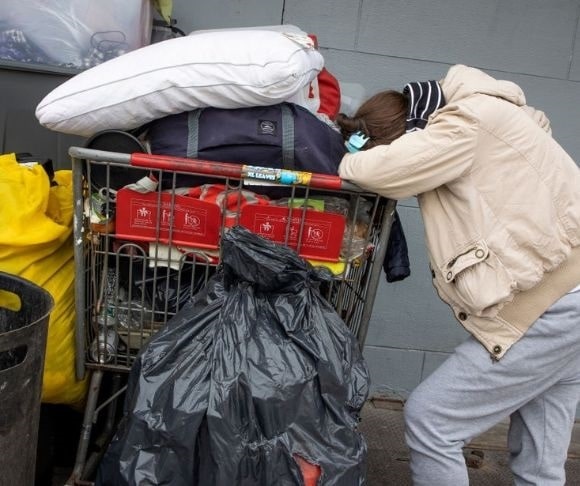
(Photo by Andrew Lichtenstein/Corbis via Getty Images)
The Federal Reserve has pulled the trigger on raising its benchmark interest rate by an additional three-quarters of a percentage point. At the Federal Open Market Committee (FOMC) policy meeting yesterday, July 28, Chair Jerome Powell and members of the rate-setting committee voted to raise interest rates by 75 basis points. But will the central bank’s decision kill inflation or the economy? This is the $8.9 trillion question.
What’s The Priority Of The Federal Reserve?
 The American people were told that – no matter what – price stability is the Fed’s chief objective. After the June annual inflation rate came in at a sizzling, higher-than-expected 9.1%, the financial markets entered panic mode. Investors immediately penciled in a Fed announcement pulling the trigger on a 100-basis-point rate hike at the July meeting. Prior to yesterday’s decision, however, the predictions of an ultra-hawkish move had dissipated, with only 25% of Wall Street expecting a full-point jump, according to the CME FedWatch Tool.
The American people were told that – no matter what – price stability is the Fed’s chief objective. After the June annual inflation rate came in at a sizzling, higher-than-expected 9.1%, the financial markets entered panic mode. Investors immediately penciled in a Fed announcement pulling the trigger on a 100-basis-point rate hike at the July meeting. Prior to yesterday’s decision, however, the predictions of an ultra-hawkish move had dissipated, with only 25% of Wall Street expecting a full-point jump, according to the CME FedWatch Tool.
The consensus on Wall Street is that the Fed will both dismantle inflation and kill the US economy. Many investment firms, from Goldman Sachs and the Bank of America to JPMorgan Chase, have downgraded their economic outlooks for 2022, 2023, and 2024. The baseline scenario for some of these banks is a recession within the next few years, with most analysts purporting that it will be a shallow downturn.

Jerome Powell (Photo by Win McNamee/Getty Images)
Based on the plethora of economic data that has been published as of late, it is safe to prognosticate a recession. But it might be comical to suggest that it will be a mild one. Hard data, surveys, and indexes have highlighted an economy that is more than slowing down – it is on the cusp of a crash. The Fed regional surveys have been obliterated into subzero territory, the housing sector is in a downfall, industrial and manufacturing output have been on a downward trend, and most business and consumer sentiment measurements have turned bearish. Even the labor market is cooling off, with jobless claims on the rise, more companies laying off workers, and wages potentially peaking.
At this point, even if the Bureau of Economic Analysis (BEA) does not show a negative GDP growth rate in the April-June span, the broader numbers point to an exceptionally sluggish economy. This, experts purport, will make it challenging for the central bank to defend its record and broader strategy.
What About Joe Biden?

Joe Biden (Photo by Scott Eisen/Getty Images)
Wait a minute. What about President Joe Biden? When does he enter the picture? The White House is already in damage control mode, a common theme for an administration that tries to front-run bad news with the wildest takes. The latest effort from 1600 Pennsylvania Ave. is to redefine what a recession is, much like the Democrats’ campaign to change what it means to be a woman. Biden blamed Russia for higher price inflation, so it is almost inevitable that he will try to locate a scapegoat for a recession. Whether he picks the Fed, Russian President Vladimir Putin, or the Republicans remains to be seen.
The only certainty is that it will be difficult for the US economy to be resuscitated on the other side of stagflation. Will the fundamentals be sound even if it is revived and brought back from the dead? The Jaws and Halloween themes are playing in the background, but the characters are oblivious to their impending doom.
Remember to check out the web’s best conservative news aggregator
Whatfinger.com — the #1 Alternative to the Drudge


